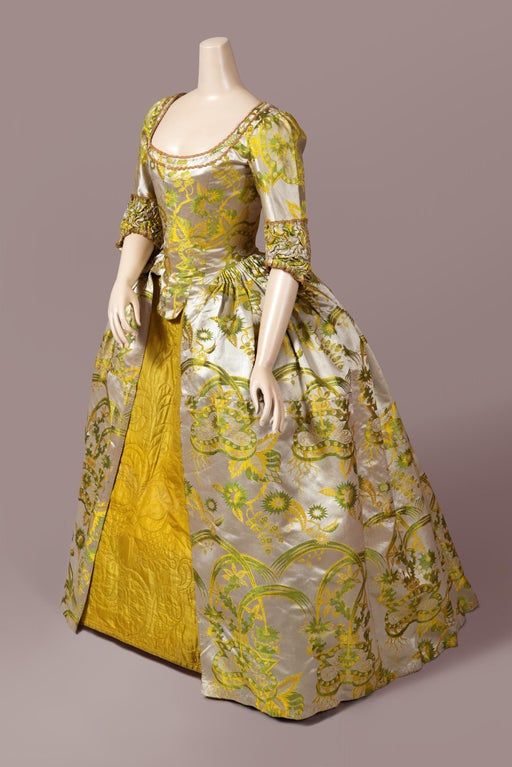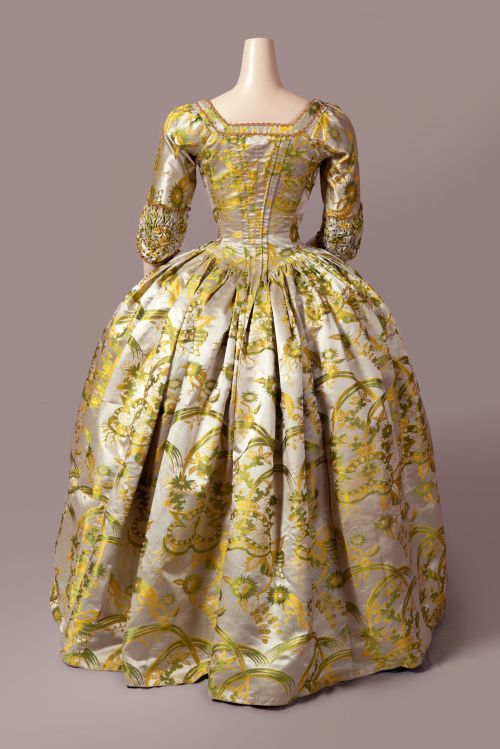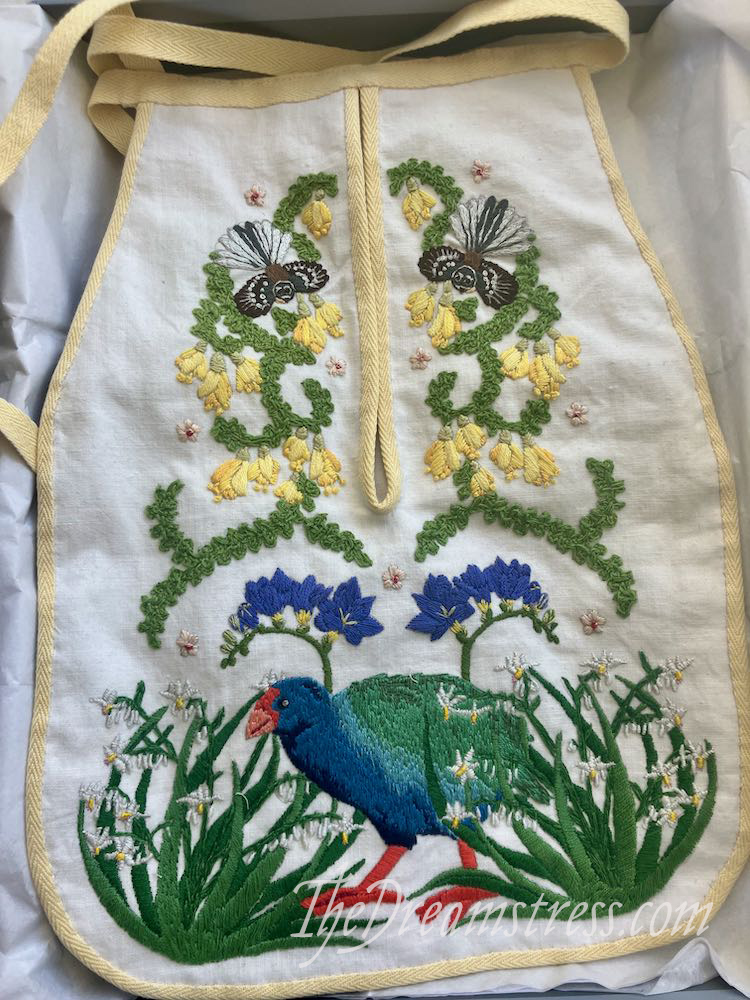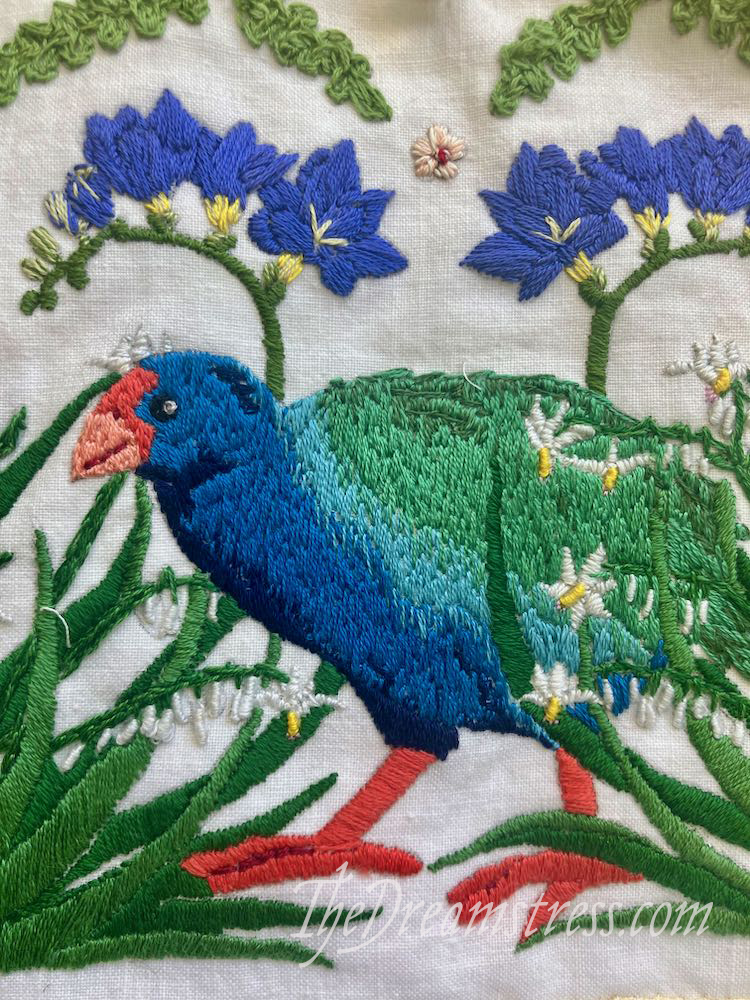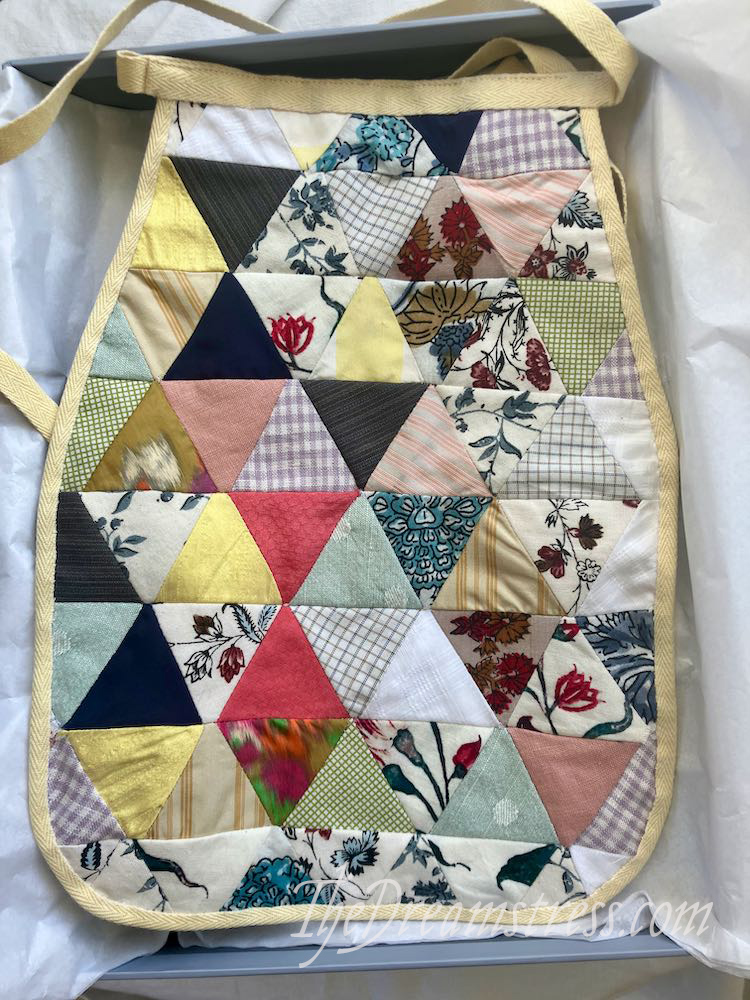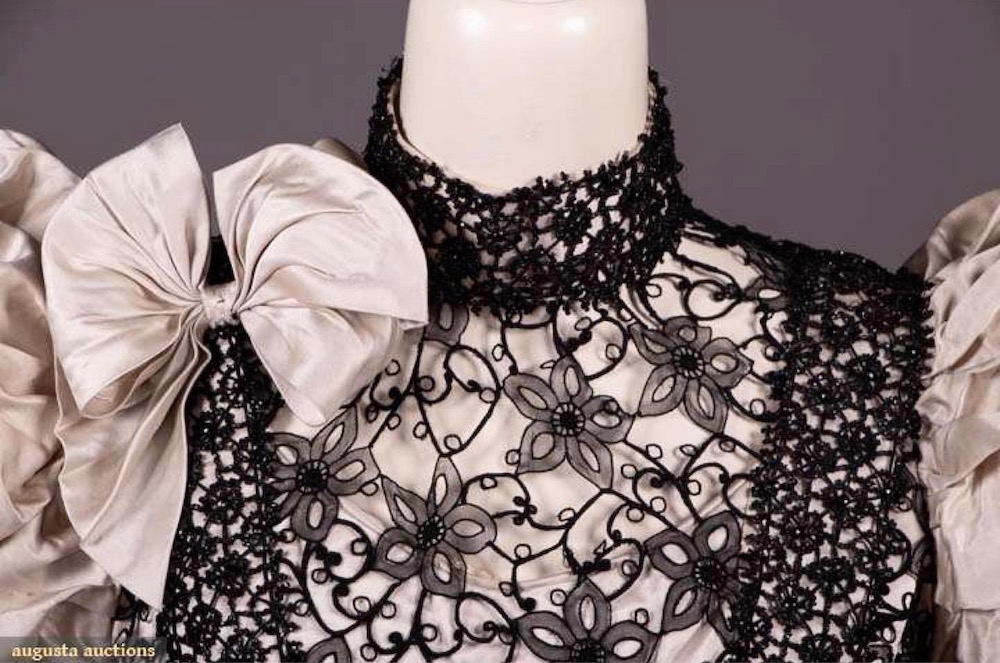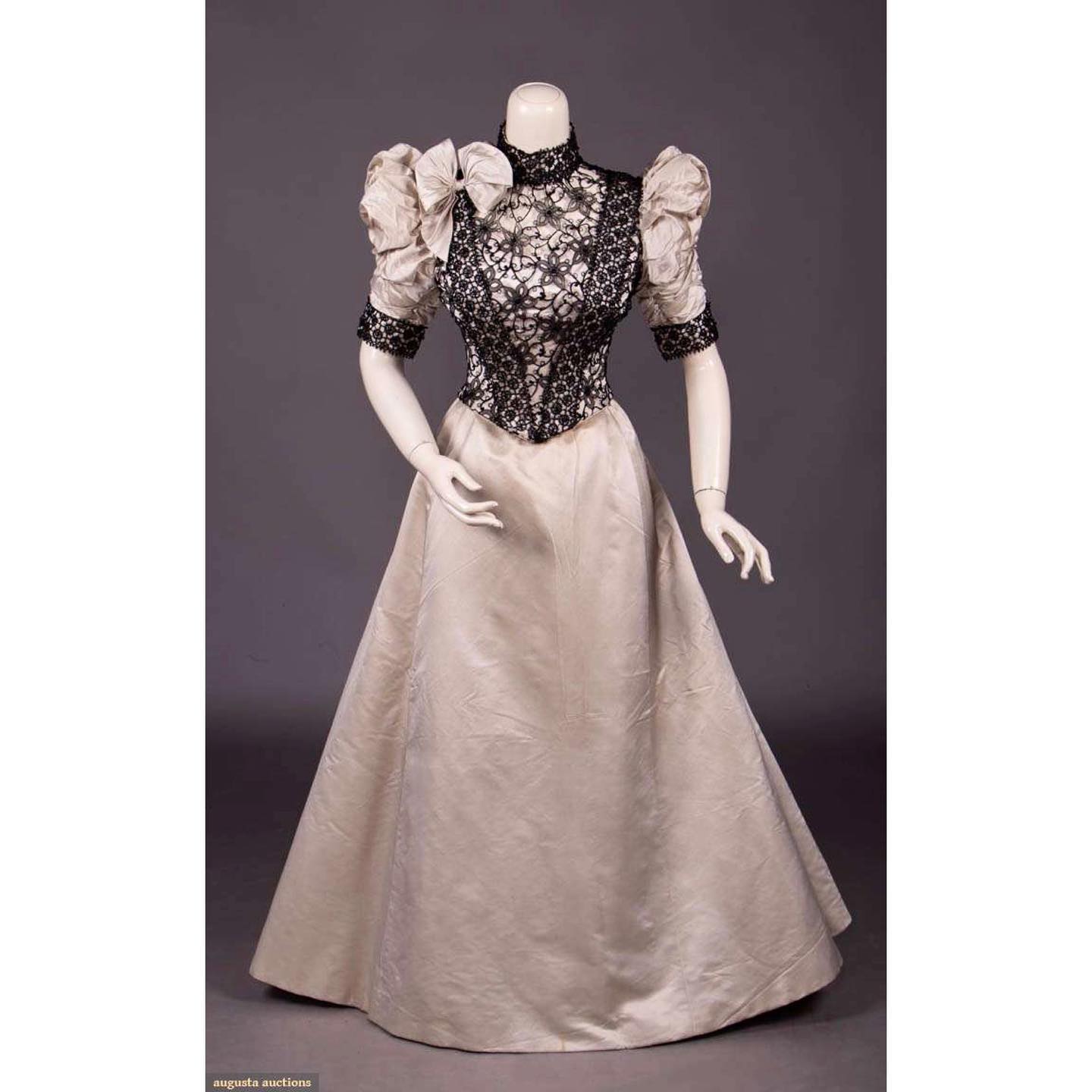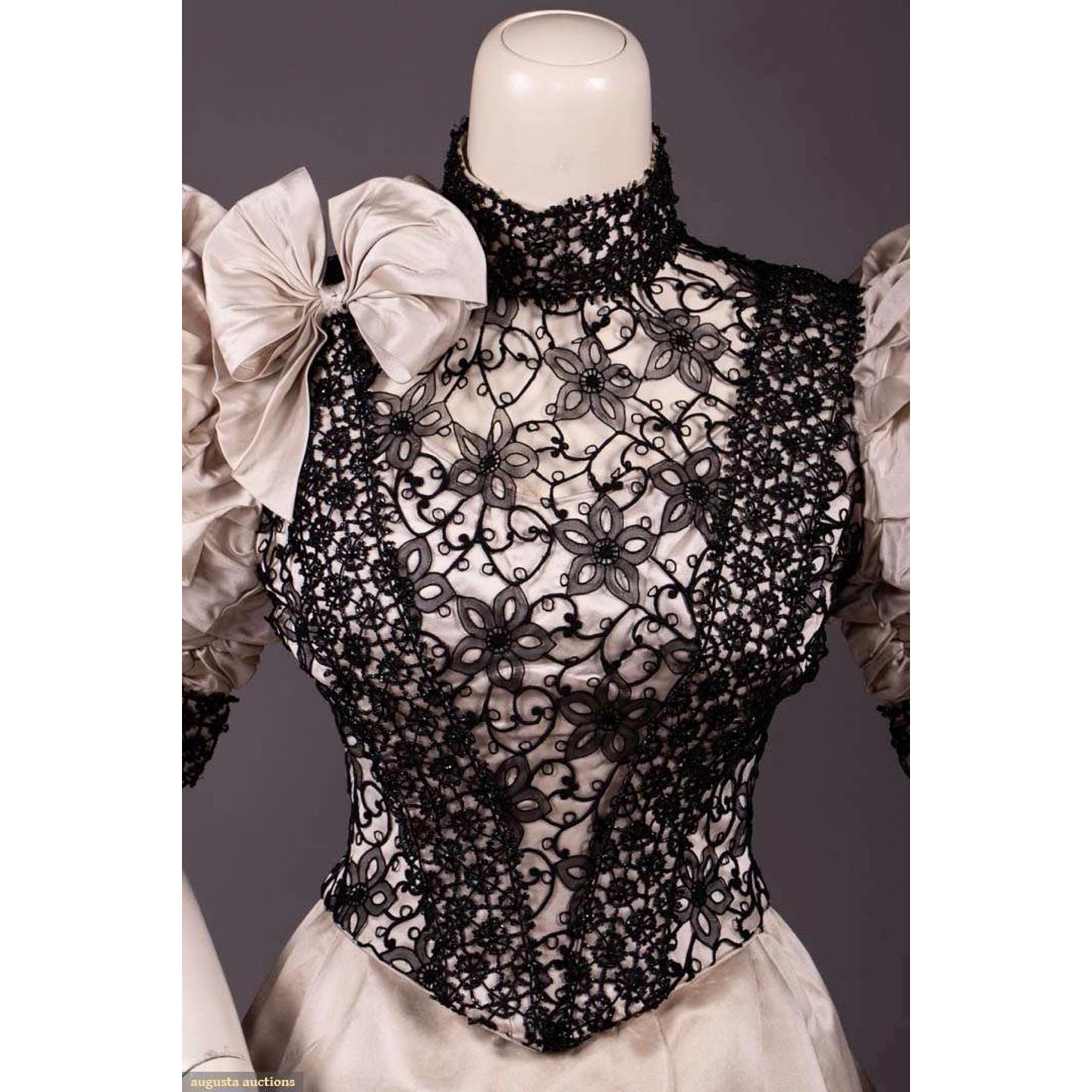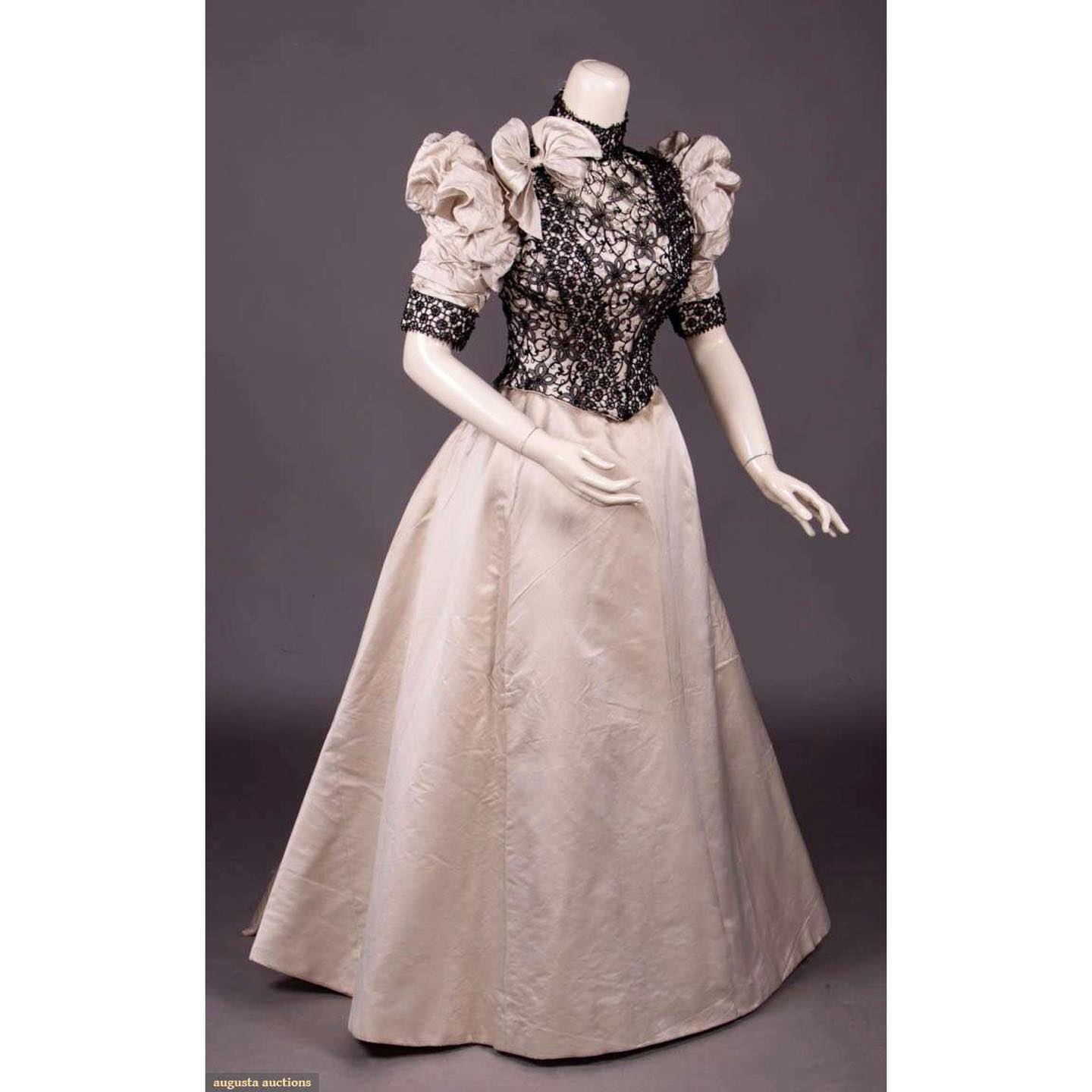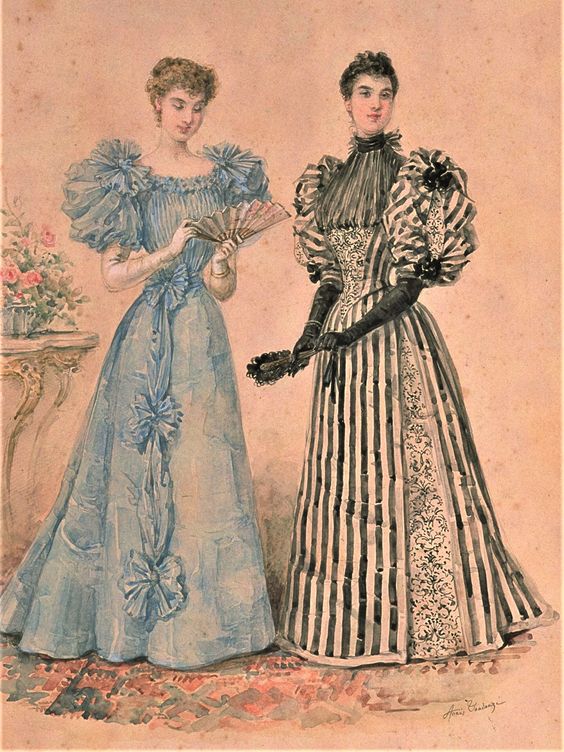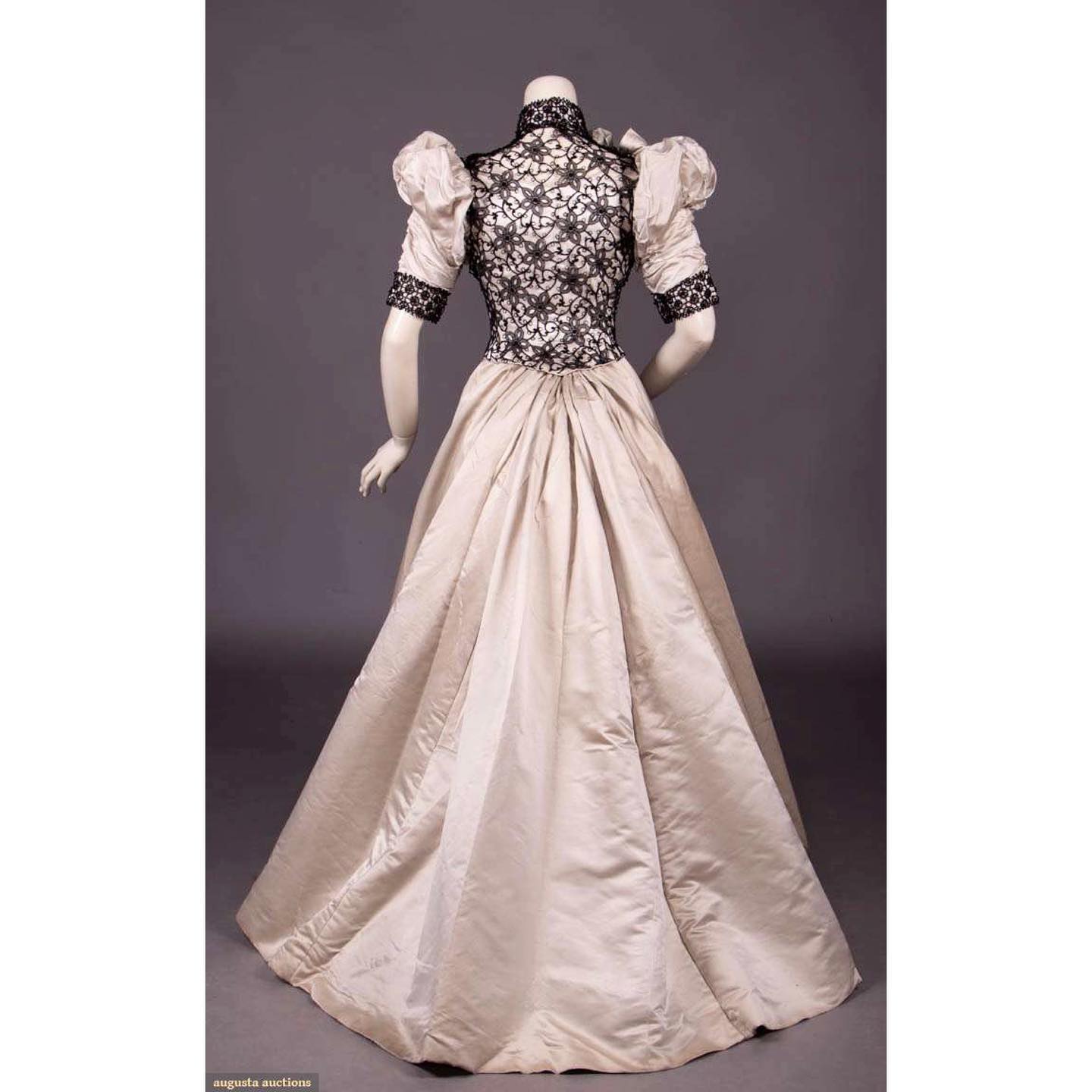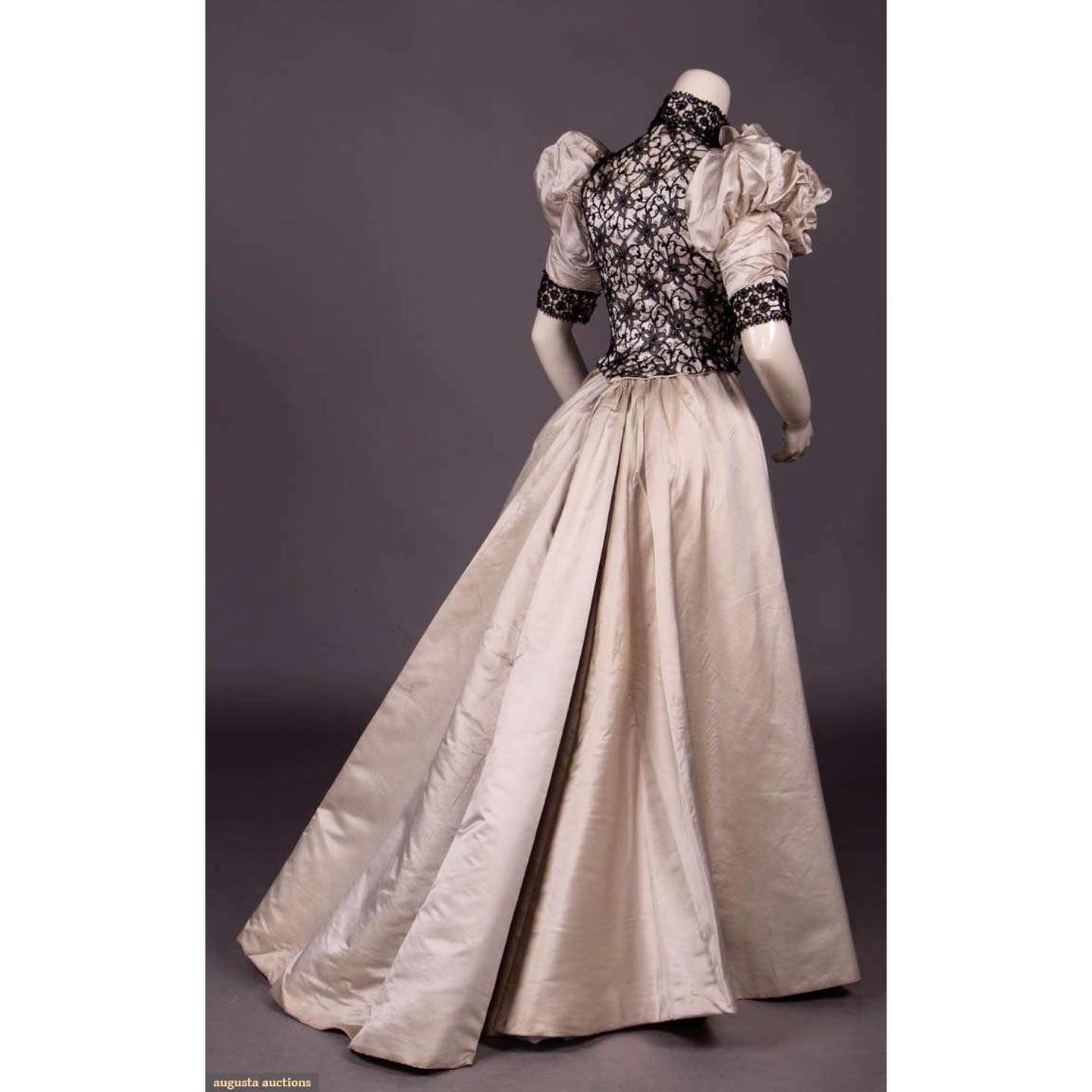Last week’s dress was very formal and monochrome, with extremely geometric, ordered lace. This week we’re going for much brighter colours, and a print that’s quite bizarre: literally.
Let’s find out what you think about it!
Last Rate the Dress: an 1890s reception gown in ivory with black lace
You know what some of you really, really don’t like? Bows. Yeeeeeeeeep. Those of you who didn’t love this didn’t love it for the bow, or simply because it was generally too dramatic.
But many of you did love it! And, as for me, well, my favourite part was the bow.
The Total: 8.4 out of 10
Better than the dress before, but not exactly a smash hit.
This week: a 1770s dress from 1708-10 bizarre silk lampas
I love the way fabric got re-used in the 18th century, and this dress is a great example of that re-use: fabric from 1708-10, re-made as a fashionable dress in the 1770s. It’s one of the earliest 18th century fabrics used again for a full late 18th century garment that I know of. It shows how much these fabrics were valued, even once the style of the fabric was noticeably out of date.
The fabric is extremely typical of 1708-10: with large Chinese inspired ‘bizarre’ motifs of fountains and rocks, and an on-trend colour scheme of acid yellow and green. Learn more about bizarre silks here.
The cut of the dress has been updated to be a la modé for the 1770s, with the newly fashionable closed front, with no stomacher. Other elements, like the fuller sleeves, have been left as they were in an earlier iteration of the dress.
According to the sale catalogue (which has lots of detailed information on the fabric) this dress was worn by Frances Clement (1723-65) as a bride ca. 1750, and was possibly remade and worn again for another wedding (probably her daughter’s) in 1777. So at least one woman though it was wedding worthy, even 40 years after the fabric was made!
What do you think? An elegant and striking update, or should this fabric have been left in the past?
Rate the Dress on a Scale of 1 to 10
A reminder about rating — feel free to be critical if you don’t like a thing, but make sure that your comments aren’t actually insulting to those who do like a garment. Phrase criticism as your opinion, rather than a flat fact. Our different tastes are what make Rate the Dress so interesting. It’s no fun when a comment implies that anyone who doesn’t agree with it, or who would wear a garment, is totally lacking in taste.
As usual, nothing more complicated than a .5. I also hugely appreciate it if you only do one rating, and set it on a line at the very end of your comment.
* this is even funnier because my students are well aware that I don’t drink at all.

